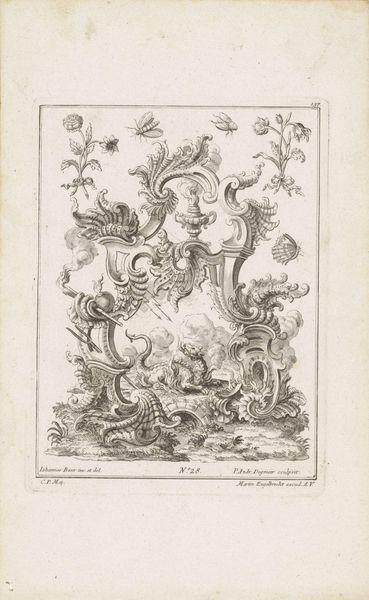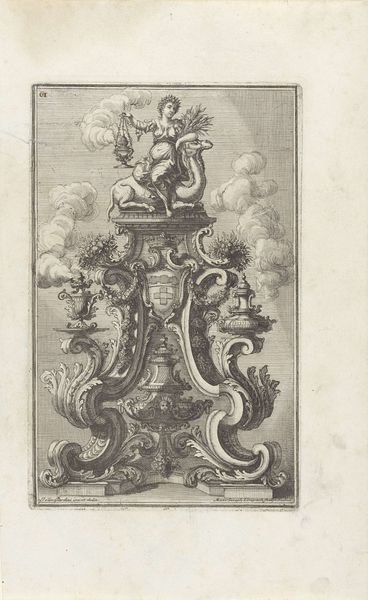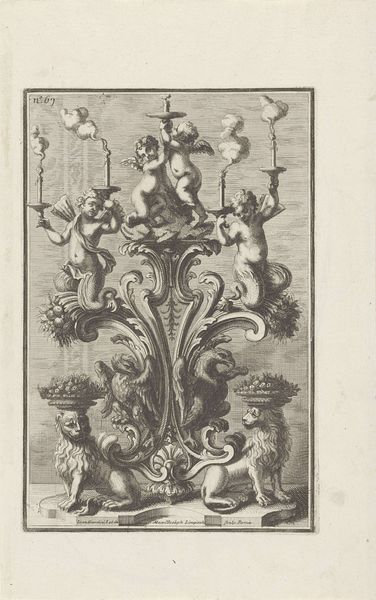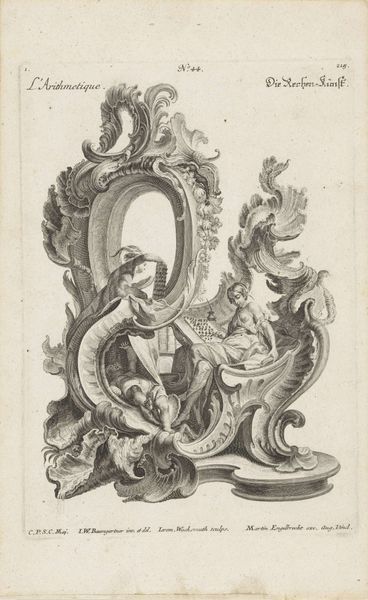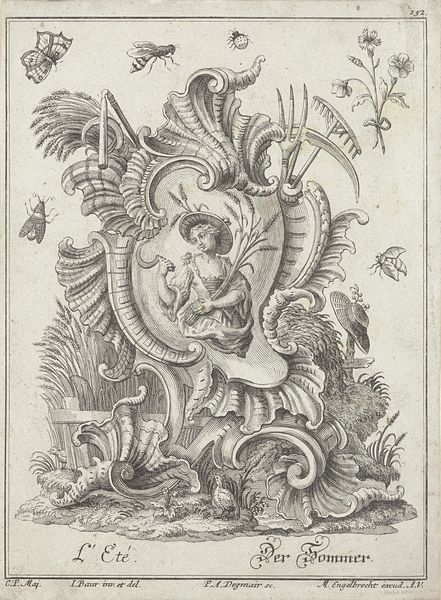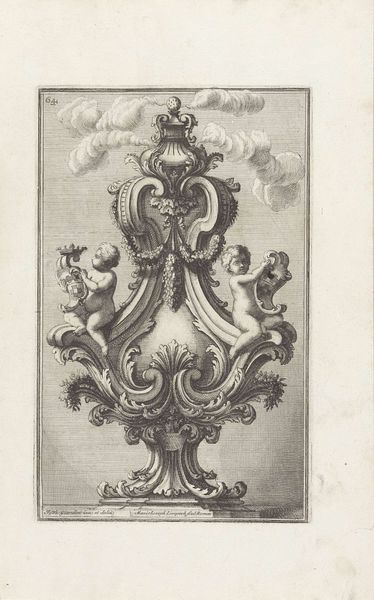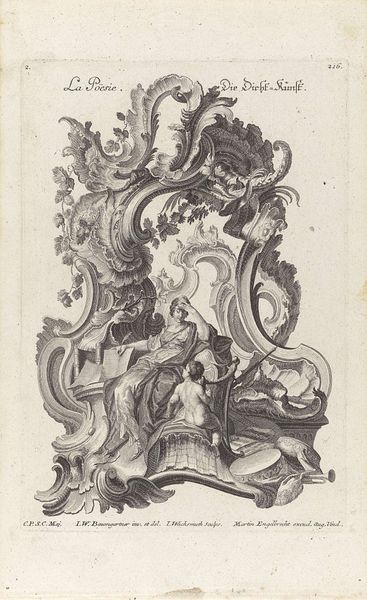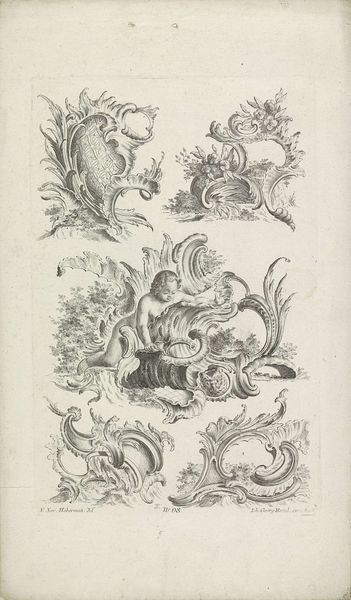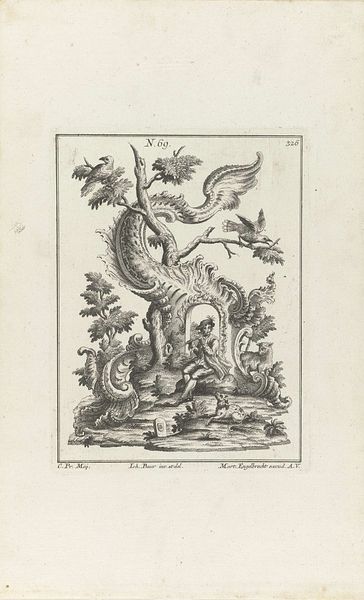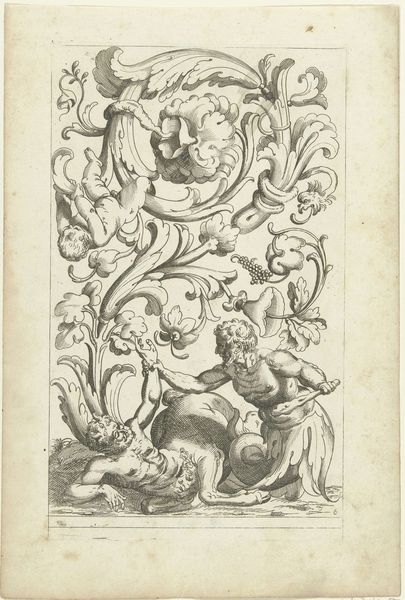
drawing, engraving
#
drawing
#
baroque
#
animal
#
pen sketch
#
old engraving style
#
landscape
#
fruit
#
engraving
#
rococo
Dimensions: height 235 mm, width 176 mm
Copyright: Rijks Museum: Open Domain
Editor: This drawing, "Rocaille met zoogdieren en vruchten" from between 1719 and 1749, is by Philipp Andreas Degmair and it's at the Rijksmuseum. It seems to depict this elaborate, almost theatrical frame around a little scene with animals. It's beautiful, but also sort of… unsettling? What do you see in this piece? Curator: I see a fascinating intersection of power, nature, and representation. Think about the Rococo period, the decorative excess, and its association with aristocracy on the eve of revolution. What does it mean to frame nature—specifically, wild animals and fruit—within this incredibly artificial structure? Consider it from a socio-political view. Who had the power to curate nature, and for what purpose? Editor: So, the frame itself is almost as important as what's inside the frame? Curator: Exactly. It speaks volumes about control, about humanity's desire to impose order onto the natural world. The Rococo style, at its core, was about presenting a carefully constructed image of leisure and dominance. How do animals, like the fox, and fruits contribute to this picture of idyllic dominance? Editor: Well, I guess the animals are a bit wild, but they’re also part of the scene, and the fruit feels bountiful and like… wealth? Curator: Precisely. Think about the history of displaying exotic animals or meticulously arranged fruit still lifes. They were both symbols of status and a display of wealth. This drawing, even though seemingly harmless, echoes that tradition. Can art truly capture "nature", or does it always frame it within a set of human assumptions and power structures? Editor: That's a totally different way of looking at it than I ever would have thought of! It makes me want to know who was able to view and consume this image and why. Curator: Indeed. It pushes us to think critically about the seemingly innocent and explore the underlying social and political context of art. We learn how these depictions participated in existing or challenged established norms.
Comments
No comments
Be the first to comment and join the conversation on the ultimate creative platform.
